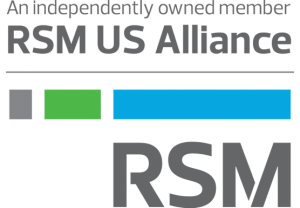Insights
Final regulations released on separately computing UBTI
TAX ALERT | November 23, 2020
Authored by RSM US LLP
On Nov. 19, 2020, the Treasury Department and IRS released a draft version of final regulations (TD 9933) under section 512(a)(6).They have been submitted to the Office of the Federal Register and are pending publication. The final regulations provide exempt organizations with definitive guidance addressing the computation of unrelated business taxable income (UBTI) for taxpayers with more than one unrelated trade or business. These regulations generally adopt and clarify the guidance provided in the proposed regulations issued April 23, 2020.
Background
The 2017 tax law (Pub. L. 115-97) added section 512(a)(6), which requires an exempt organization with more than one unrelated trade or business to compute UBTI separately with respect to each trade or business, commonly referred to as ‘silos,’ effectively limiting losses to the unrelated trade or business that generates them. In August 2018, Treasury and the IRS released initial interim guidance, addressing the categorization of unrelated trades or businesses based upon their six-digit North American Industry Classification System (NAICS) code, rules for aggregating partnership investment activities meeting certain criteria, and transition rules for partnership interests acquired before Aug. 21, 2018. In April 2020, proposed regulations were released, expanding upon the preliminary guidance issued in the notice. Read RSM’s summary of the proposed regulations.
Overview
The final regulations generally retain the proposed guidance issued in April and, in consideration of comments received in response to the proposed regulations, offer minor modifications and additional clarifications, including the following:
- Permitting exempt organizations to change the NAICS code classification of an unrelated trade or business
- Renaming the control test to the “participation test”
- Broadening the application of the look-through rule
NAICS codes
The final regulations retain the two-digit NAICS code framework for identifying separate trades or businesses and specify that in determining which code best describes an activity, organizations should use the more specific NAICS code (e.g. the six-digit NACIS code) that describes the unrelated trade or business. The regulations specify that the descriptions in the current NAICS manual are relevant to this determination. With respect to the unrelated sale of goods both online and in-store, the regulations provide that the applicable trade or business is identified by the goods sold in stores, if the same goods generally are sold both in-store and online.
The final regulations remove the restriction on changing an activity’s NAICS code as enumerated in the proposed regulations and instead require reporting of such change in the taxable year of the change. Treasury and the IRS anticipate a revision to the Form 990-T instructions to provide guidance as to where and how changes in NAICS code identification are reported and expect to include the following information:
- NAICS code identification of the activity in the previous tax year
- NAICS code identification of the activity in the current tax year
- Reason for the change
Qualifying partnership interests
The final regulations continue to treat an exempt organization’s investment activities collectively as a separate trade or business, limited to qualifying partnership interests (QPIs), qualifying S corporation interests, and debt financed property. The final regulations provide further guidance with respect to an organization’s ability to aggregate UBTI from these activities.
Expanding upon the exclusion of a partnership in which the exempt organization is a general partner from being treated as a QPI, the final regulations require the exempt organization to evaluate the role of its related organizations (generally supporting organizations and controlled entities). If any of these organizations is a general partner in the partnership, then the partnership cannot be treated as a QPI.
The final regulations also rename the control test, the “participation test” and provide additional clarification regarding its application. Rather than use the contentious “control” requirement as found in the Notice and proposed regulations, the final regulations require that the exempt organization:
- Directly holds no more than 20% of the capital interest in the partnership, and
- Does not significantly participate in the partnership.
The control test used a facts and circumstances approach; however, the final regulations rely solely on the four factors that evidence significant participation:
- The exempt organization, by itself, may require the partnership to perform, or prevent the partnership from performing (other than through a unanimous voting requirement or through minority consent rights), any act that significantly affects the operations of the partnership,
- Any of the exempt organization’s officers, directors, trustees, or employees have rights to participate in the management of the partnership at any time,
- Any of the organization’s officers, directors, trustees, or employees have rights to conduct the partnership’s business at any time, or
- The organization, by itself, has the power to appoint or remove any of the partnership’s officers or employees or a majority of directors.
The final regulations narrow the aggregation rule that requires an exempt organization to include the ownership of its section 512(b)(13) controlled entities and supporting organizations in determining its ownership for purposes of the participation test. Specifically, under the final regulations, an exempt organization does not include the partnership interests held by a Type III supporting organization. However, it must still include the ownership of Type I and Type II supporting organizations.
The final regulations also favorably expand the “look-through” rule with respect to indirectly held partnership interests by permitting the exempt organization to evaluate whether the partnership that holds the indirectly held partnership meets the participation test with respect to that lower tier interest. In other words, indirectly held partnership interests may be QPIs if the exempt organization holds no more than 2% of the capital or profits interest (de minimis) or if a directly held or indirectly held partnership owns no more than 20% of the capital interest and does not significantly participate in the lower-tier partnership (participation test). The final regulations illustrate the application of these tests through examples.
The final regulations also adopt a grace period that permits an exempt organization to treat a partnership as a QPI provided that it met either the de minimis or participation tests in the organization’s prior taxable year and failed to do so in the current year due to certain conditions that were outside of the organization’s control.
Net operating losses
The final regulations clarify the guidance provided in the proposed regulations with respect to coordinating pre-2018 and post-2017 NOLs, providing that pre-2018 NOLs should be taken against total UBTI in a manner that allows for maximum utilization of post-2017 NOLs in a taxable year. For example, an organization may allocate all of its pre-2018 NOLs to one of its separate trade or businesses or it may allocate them ratably, whichever results in the greatest utilization of the post-2017 NOLs for the taxable year.
The final regulations also clarify that NOLs from a trade or business that changes NAICS code identification will generally remain siloed with the previously identified category and will not carry over to the newly identified separate trade or business. This also applies to NOLs attributable to a QPI that becomes a non-QPI, meaning that any previously generated NOLs are retained with the organization’s investment activities. One notable exception to this general rule exists where the NAICS code identification of an activity is changed due to prior misclassification. In this case, provided that there has been no material change in the unrelated trade or business, the NOLs attributable to the activity will follow the activity to the corrected NAICS silo.
Public support test
In an effort to mitigate any unintended negative consequences to exempt organizations relying on the public support test, the final regulations permit an organization with more than one unrelated trade or business to compute their public support using either UBTI calculated under section 512(a)(6) or UBTI calculated in the aggregate.
Effective date
The final regulations will be effective for tax years beginning on or after the date they are published in the Federal Register; however, taxpayers may choose to apply the final regulations to taxable years beginning on or after Jan. 1, 2018. Alternatively, taxpayers may rely on a reasonable good-faith interpretation of section 512(a)(6), including guidance provided in Notice 2018-67 or the proposed regulations, until such time as the final regulations go into effect.
Let's Talk!
Call us at +1 213.873.1700, email us at solutions@vasquezcpa.com or fill out the form below and we'll contact you to discuss your specific situation.
This article was written by Alexandra O. Mitchell and originally appeared on Nov 23, 2020.
2022 RSM US LLP. All rights reserved.
https://rsmus.com/insights/tax-alerts/2020/final-regulations-released-on-separately-computing-ubti.html
The information contained herein is general in nature and based on authorities that are subject to change. RSM US LLP guarantees neither the accuracy nor completeness of any information and is not responsible for any errors or omissions, or for results obtained by others as a result of reliance upon such information. RSM US LLP assumes no obligation to inform the reader of any changes in tax laws or other factors that could affect information contained herein. This publication does not, and is not intended to, provide legal, tax or accounting advice, and readers should consult their tax advisors concerning the application of tax laws to their particular situations. This analysis is not tax advice and is not intended or written to be used, and cannot be used, for purposes of avoiding tax penalties that may be imposed on any taxpayer.
RSM US Alliance provides its members with access to resources of RSM US LLP. RSM US Alliance member firms are separate and independent businesses and legal entities that are responsible for their own acts and omissions, and each is separate and independent from RSM US LLP. RSM US LLP is the U.S. member firm of RSM International, a global network of independent audit, tax, and consulting firms. Members of RSM US Alliance have access to RSM International resources through RSM US LLP but are not member firms of RSM International. Visit rsmus.com/about us for more information regarding RSM US LLP and RSM International. The RSM logo is used under license by RSM US LLP. RSM US Alliance products and services are proprietary to RSM US LLP.

Vasquez & Company LLP is a proud member of the RSM US Alliance, a premier affiliation of independent accounting and consulting firms in the United States. RSM US Alliance provides our firm with access to resources of RSM US LLP, the leading provider of audit, tax and consulting services focused on the middle market. RSM US LLP is a licensed CPA firm and the U.S. member of RSM International, a global network of independent audit, tax and consulting firms with more than 43,000 people in over 120 countries.
Our membership in RSM US Alliance has elevated our capabilities in the marketplace, helping to differentiate our firm from the competition while allowing us to maintain our independence and entrepreneurial culture. We have access to a valuable peer network of like-sized firms as well as a broad range of tools, expertise and technical resources.
For more information on how Vasquez & Company LLP can assist you, please call +1 213.873.1700.
Subscribe to receive important updates from our Insights and Resources.
